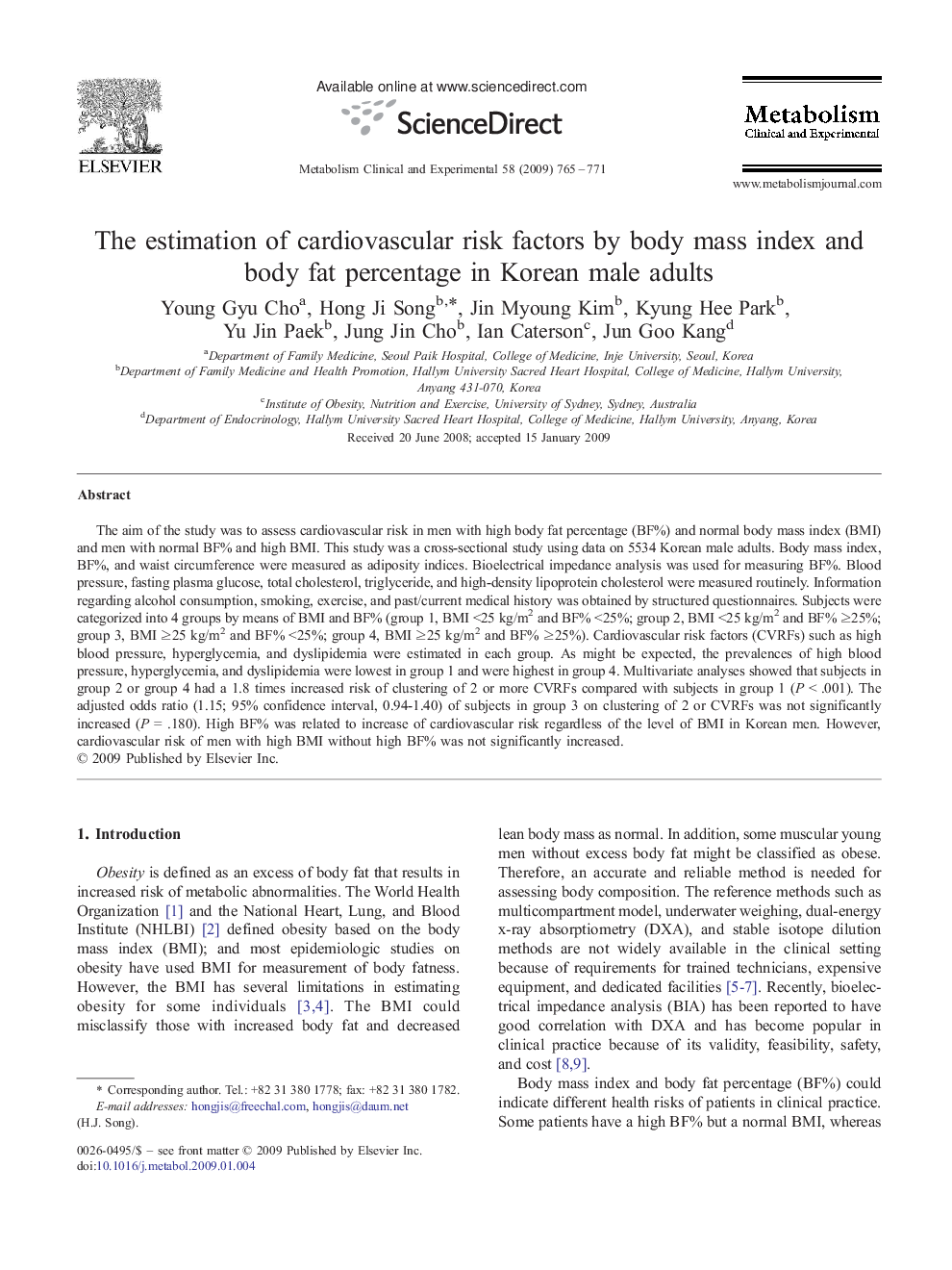| Article ID | Journal | Published Year | Pages | File Type |
|---|---|---|---|---|
| 2806885 | Metabolism | 2009 | 7 Pages |
The aim of the study was to assess cardiovascular risk in men with high body fat percentage (BF%) and normal body mass index (BMI) and men with normal BF% and high BMI. This study was a cross-sectional study using data on 5534 Korean male adults. Body mass index, BF%, and waist circumference were measured as adiposity indices. Bioelectrical impedance analysis was used for measuring BF%. Blood pressure, fasting plasma glucose, total cholesterol, triglyceride, and high-density lipoprotein cholesterol were measured routinely. Information regarding alcohol consumption, smoking, exercise, and past/current medical history was obtained by structured questionnaires. Subjects were categorized into 4 groups by means of BMI and BF% (group 1, BMI <25 kg/m2 and BF% <25%; group 2, BMI <25 kg/m2 and BF% ≥25%; group 3, BMI ≥25 kg/m2 and BF% <25%; group 4, BMI ≥25 kg/m2 and BF% ≥25%). Cardiovascular risk factors (CVRFs) such as high blood pressure, hyperglycemia, and dyslipidemia were estimated in each group. As might be expected, the prevalences of high blood pressure, hyperglycemia, and dyslipidemia were lowest in group 1 and were highest in group 4. Multivariate analyses showed that subjects in group 2 or group 4 had a 1.8 times increased risk of clustering of 2 or more CVRFs compared with subjects in group 1 (P < .001). The adjusted odds ratio (1.15; 95% confidence interval, 0.94-1.40) of subjects in group 3 on clustering of 2 or CVRFs was not significantly increased (P = .180). High BF% was related to increase of cardiovascular risk regardless of the level of BMI in Korean men. However, cardiovascular risk of men with high BMI without high BF% was not significantly increased.
